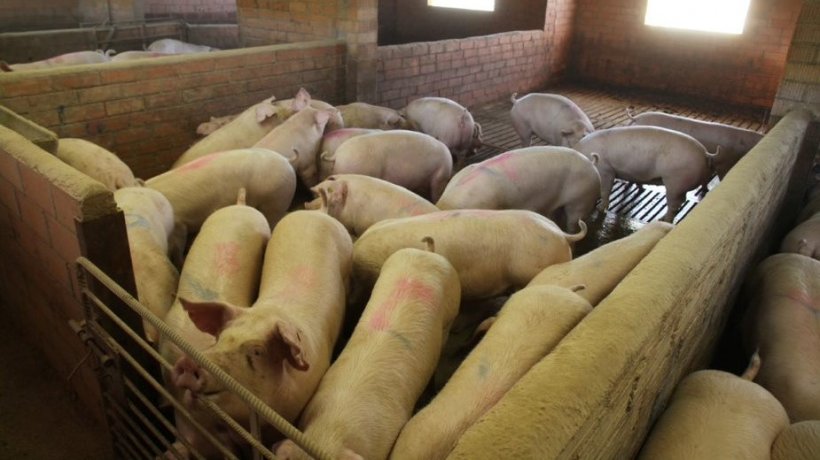Reading a recent article in pig333.com (‘Effects of pen location on thermoregulation and growth performance of grow-finish pigs’) prompted me to think about the importance of factors to consider when designing and conducting pig nutrition studies. This particular study (published in Translational Animal Science 2019; 3(4):1375-1382) was designed specifically to illustrate the impacts of microclimate variability in a building on thermoregulation and production, but more on that later.
Conducting pig nutrition studies is generally a time consuming and costly exercise, whether it be conducted in dedicated research and commercial facilities or an on-farm trial. Therefore, it is not desirable that results obtained from these studies might be unfavourably impacted or interpreted by the experimental design that was used. Reading the abovementioned paper reminded me of an experimental facility where we once conducted nursery pig nutrition studies and encountered a related issue. Being able to maintain a good level of environmental control is critical for nursery pig studies given the close association between energy and nutrient supply to support growth and the negative consequences of pigs being kept outside of their thermoneutral zone. One doesn’t want to be studying, for example, the effects of increasing dietary energy levels on post-weaning performance when a portion of that energy is being redirected to maintenance because the pigs are below their lower critical temperature.

The facility in question was able to be warmed and cooled via the use of (fan-driven) air inlets, but these were on one side of the building only. The building was not tunnel ventilated. It was noticed, and despite the ambient temperature fluctuating minimally over a 24-hour period in the entire building, that pigs located in pens closer to the inlets were often hairier (sign of being cold) and on occasions showed more diarrhoea (another sign of being cold). Of concern was that the results from carefully designed nutrition studies might be being compromised simply by virtue of the location of these pens. As a consequence, and in addition to randomising dietary treatments to pigs on the basis of bodyweight, litter of origin, sex and so on, treatments were also blocked according to location of the pens along that side of the wall.
So, what is ‘blocking’?
In their editorial ‘Guidelines for experimental design and statistical analyses in animal studies submitted for publication in the Asian-Australasian Journal of Animal Sciences’, Seo and colleagues (2018) referred to blocking as the practice where the experimental units (that is, an individual pig or a pen of pigs, depending on the circumstances) are placed into groups of similar units based on one or more factors that are known or expected to affect the responses to be measured and tested. In nursery pig studies, and as mentioned above, characteristics such as bodyweight, litter of origin, and sex are commonly used for blocking; such an experimental design is called a randomised complete block design (or RCBD). By forming more homogenous groups of experimental units, blocking reduces experimental error such that the experimental treatments imposed (for example, these might be a comparison of different levels of a feed additive relative to a Positive control treatment, or different SID amino acid ratios) provide the greatest chance of detecting statistical differences between those treatments. In this regard, and only if appropriate, location of the pens in a building should also be used as a blocking factor in the experimental design.
Back to the study I mentioned at the start of this article: just what were the impacts of the location of the pens in that building? The researchers found that the physical location of the pens had a significant impact on body temperatures that in turn negatively affected the gain-to-feed ratio, despite similarities in pen ambient temperature and relative humidity between all pens (Table 1).
Table 1. Influence of pen location (L) and recording period (P) on growth parameters in grow-finish pigs during late summer (after Kpodo et al., 2019).
| P1 | P2 | P3 | P value | ||||||
|---|---|---|---|---|---|---|---|---|---|
| PP | IP | PP | IP | PP | IP | L | P | LxP | |
| Daily feed intake, kg | 2.12 | 2.11 | 2.21 | 2.17 | 2.50 | 2.45 | 0.71 | <0.01 | 0.96 |
| Daily gain, kg | 0.68 | 0.69 | 0.68 | 0.74 | 0.80 | 0.81 | 0.28 | <0.01 | 0.78 |
| Gain:feed, kg:kg | 0.32 | 0.33 | 0.32 | 0.35 | 0.32 | 0.33 | 0.02 | 0.40 | 0.18 |
PP: peripheral pens, located 0.70 ± 0.29 m to either side of the closest fan.
IP: internal pens, located in direct line of sight between the fans and the air inlets.
The take-home message: conducting pig nutrition studies takes time, effort and cost; therefore make sure the experimental design considers all possible factors that might influence the experimental outcomes of the treatments being tested. If in doubt about the type of design to use, first consult with somebody experienced with the principles of animal experimentation. Such an up-front investment is usually worthwhile in the long run.
* Full references are available upon request.




